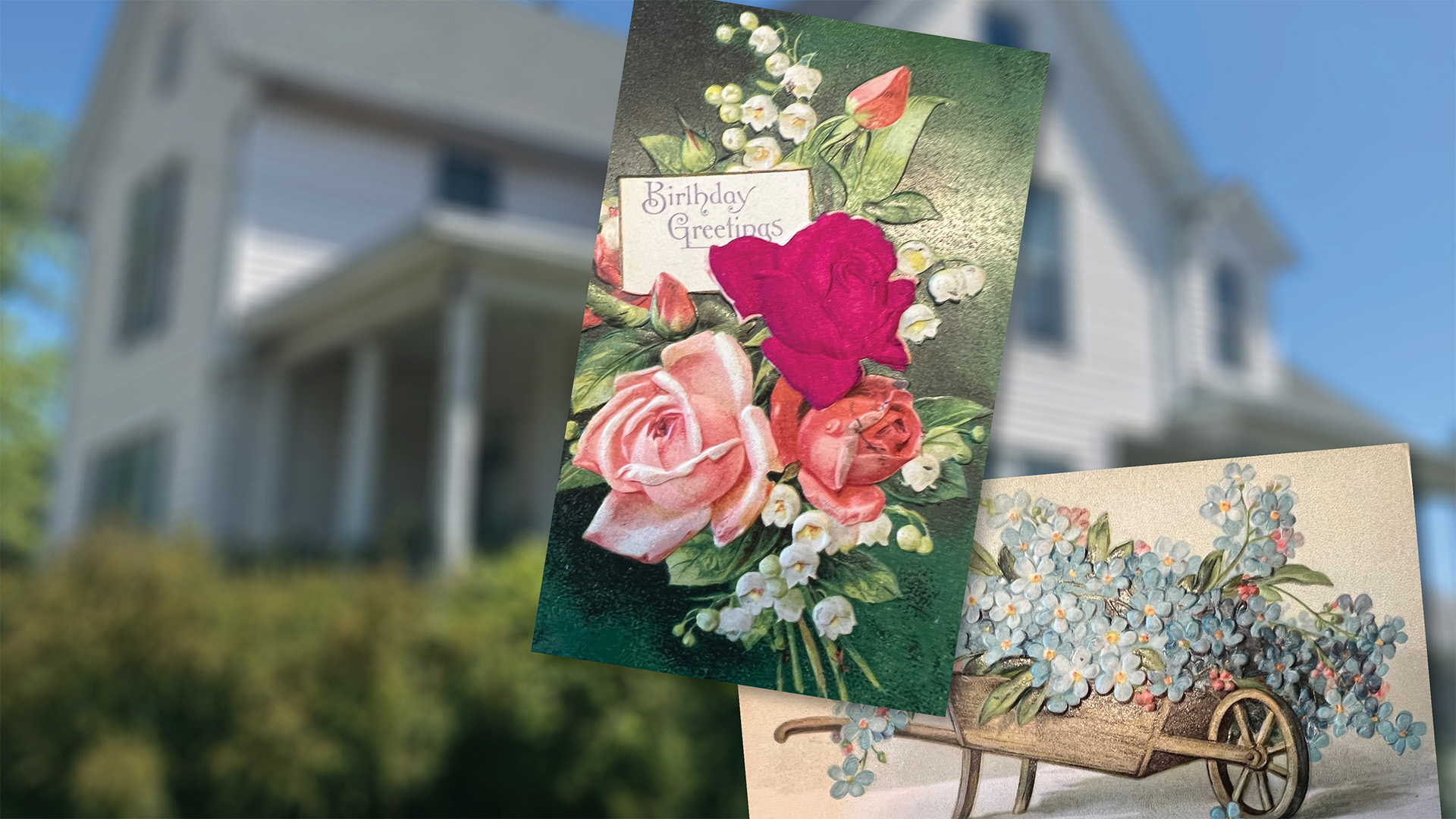How do you sort through a person’s life?
After a loved one dies, can you pore over decades and decades of belongings, keepsakes and mementoes — deciding what stays and what goes — without feeling like the Grim Reaper?
Chunk by chunk, pile by pile, a long lifetime undergoes quick scrutiny.
What goes inside a scrapbook? What heads out with the potato peels?
What survives? What doesn’t?
Thumbs up. Thumbs down.
Sigh.
Perhaps you’ve had to undertake this unwelcome but necessary chore. Someone dies, and a home cannot remain a museum forever. Trash bag after trash bag gets stuffed fat, while the keeper box looks relatively barren.
You mind calls it practical. But your heart feels cold.
In my case, I’ve been sifting through not just one lifetime but several. Aunt Donna’s weathered house makes for a remarkable time capsule, chronicling four generations of the family that built the place.
In the wake of her passing at the age of 88, I have become the main caretaker of this ersatz museum, which soon will be sold. Aunt Donna had no widower or children, and her next-of-kin is my wife. So, for weeks, I’ve been rummaging through nearly 150 years of memories.
I knew only Aunt Donna, none of her long-gone forebears. So, I feel like something of an archeologist, examining a family from the inside-out. Maybe that makes me suited for the job, with less sentimentality to get in the way of pragmatism.
She kept a neat house: a place for everything and everything in its place. But there is so much jammed into so many places.
She was no hoarder. She was a bookkeeper. Very thorough. At work, that’s efficient. At home, now that she’s gone, it can be overwhelming.
There are papers and files and papers and boxes and folders and papers and copies and papers and frames and papers and certificates and papers and photos and papers and binders and papers and receipts and papers and coupons and papers and warranties and papers and manuals and papers and pamphlets.
Oh, did I mention the papers?
Some of these records — marriage certificates, school diplomas — make for interesting reading. Others — a complete collection of every personal check written from 1967 to 1979 — do not.
There is also what must be the world’s largest collection of empty margarine tubs and coffee cans. You know, to save more things.
She was born during the Great Depression, so I understand the drive for thrift and preparation. Don’t throw away anything that might be useful later. Plus, before her, the household made it through, by my best count, 15 nationwide depressions, recessions and panics. So, waste not, want not, right?
Still, somewhere along the line, perhaps an occasional inventory might’ve been in order. This would’ve been especially prudent for what I’ve taken to call The Amazing Mystery Closet. It stands just off the creaky stairway to the dank cellar. My wife, who’d explored every nook and cranny of the place in her youth, can’t recall ever seeing the closet, as if it’s some sort of ghost storage area.
It’s certainly spooky. Fibber McGee had a messy closet. But this one? Fibber 2.0, stuffed with a hodgepodge of shoes, batteries, potions, powders, newspapers, dresses, rags and whatnots. The latter category includes multiple unmarked bottles filled with unknown liquids. Yikes.
Other items are unidentifiable, rusted by time. For instance, there are several rods. For fishing? Curtains? Both? Beats me.
There’s an impressive collection of what seem to be worn but clean plumbing parts, waiting for another day in the sun (or toilet) that never came. There is linoleum paste and furniture cream. And, for reasons I cannot imagine, more old doorknobs than needed inside the Taj Mahal.
And almost none of it was salvageable. Blame decay on age. The shelves were lined with newspapers from the 1940s, including the front page of the March 23, 1945 Peoria Morning Star, screaming the headline, “Allied armies stand ready for big blow.” My guess is that most of the closet’s contents had not been touched in almost 80 years. That’s a lot of time for Father Time to work his worst.
Other items in the house have dubious value. As Exhibit A, there are — I kid you not — about 600 self-made VHS tapes, 90% of them Westerns, including every flick featuring John Wayne.
Plus, there are countless merchandise boxes, as pristine as the purchase date, empty and stacked at the ready. After all, you never know when the VHS rewinder might conk out, prompting its return to Venture or Kmart.
Yet some of the left-behinds are charming and insightful. For instance, as in many households in the early 20th century, Aunt Donna’s ancestors were big on postcards. This was before the explosion of greeting cards as an industry. With this modest family, these postcards rarely marked travel; rather, dotted with a penny stamp, they were a cheap way to exchange birthday and holiday greetings, or even just to say hello.
Imagine that: A message we’d now send as an instantaneous text would back then take days to arrive. Then again, what those messages lacked in immediacy they gained in longevity. A hundred-plus years from now, your descendants won’t marvel and smile at your old texts.
So, I kept the postcards. Most of the other stuff, I did not. I’d like to think I’ve been respectful. And I hope Aunt Donna would agree.
But with every haul to the trash, I’m nonetheless left with a feeling of heartlessness, not to mention a sore back. Apparently, I’m not the only one in such a pickle, thus the trendy movement called “Swedish death cleaning.”
The title — made popular by a book and TV show of the same name, The Gentle Art of Swedish Death Cleaning — sounds severe but is actually calm and methodical. Regardless of your age, the philosophy embraces decluttering your home, giving yourself more room and less distraction. Plus, when the time comes, your kin won’t have to agonize over what to do with all your mountains of stuff.
As they say, you can’t take it with you. But when you’re gone, it’s gotta go somewhere. And someone has to get it there.





